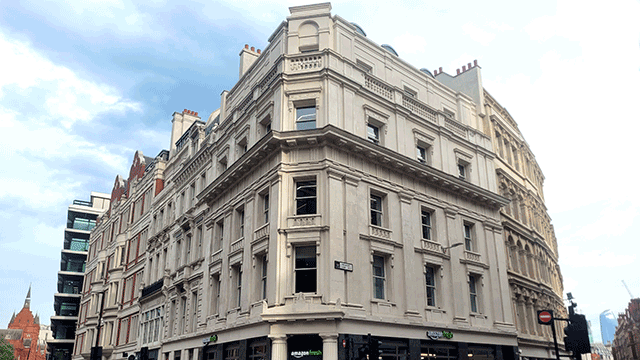Several shops at large shopping centres in England and Wales are set to see their business rates bills cut by up to a half in April’s business rates revaluation, according to new research.
Findings from JDM Retail, shared exclusively with EG, also show that emerging shopping streets in central London are among the locations that will bear the brunt of the rates shake-up.
Retailers with downward revaluations will benefit from a lack of downward caps, leading to a full rates discount in the first year. Upward transitional relief caps will be brought in for ratepayers facing substantially higher bills after revaluation, as outlined in last year’s Autumn Statement. That is likely to provide some respite for the ratepayers that are under the most pressure.
Mall order
Out-of-town malls, city centres and large towns are set to gain the most from the upcoming revaluation.
Westfield Stratford City was found to be the outlier for shopping centres in England and Wales, with an overall 3% increase in rateable values. This was mainly driven by a 37% leap in RVs among its restaurants. Westfield London in Shepherd’s Bush, on the other hand, will benefit from a 33% reduction.
Other shopping centres benefiting from the revaluation include Bluewater in Kent, which will enjoy a projected 44% cut in rateable values.
Retail uses at the Lakeside shopping centre in Essex are set to see a 50% reduction in rateable values, while RVs for shops at Bristol’s Cribbs Causeway are set to decrease by 45%. Those figures exclude restaurants.
In London’s West End, rateable values are expected to fall by 17% to £1.2bn across all retail types. In Manchester, equivalent values are set to decrease by nearly a fifth (19%) to £126m.
Central London pockets under pressure
Albemarle Street, W1, will be hardest hit in the revaluation among central London’s main shopping areas, with a 36% rise in rateable values. Other notable increases include Savile Row (8%) and Piccadilly (6%).
The area that will benefit the most among central London’s shopping destinations is South Molton Street, W1, which will experience a 51% decrease in rateable values.
Oxford Street will post a 39% decrease, while RVs on Regent Street are forecast to come down by 30%. Out of the “ORB” retail street trio, Bond Street will see the smallest reduction, with RVs on Old Bond Street to fall by 11%.
In outer London, gentrifying neighbourhoods such as Brixton, Dalston, Hackney and Streatham are set to see an increase in rateable values, while much of west and south-west London – which traditionally command high rents – will post reductions.
Overall, rateable values for retail properties in London are predicted to fall by just over 8%.
London is set to contribute 28% of business rates paid by shops, restaurants and cafés, pubs and wine bars and markets. However, the capital only comprises 17% of total properties.
Shops hit in Liverpool and Manchester
The North East and Yorkshire and the Humber regions will experience the biggest overall falls in rateable value for retail uses, at around 13% each.
Only Liverpool and Manchester saw rateable values for shops increase on some major streets. In Liverpool, shops on Ranelagh Street are under the most pressure with a 36% rise in values, followed by Bold Street, where RVs will rise by 25%.
The greatest regional beneficiary will be Lister Gate in Nottingham, which will be boosted by a 53% fall in RVs. Shops at Victoria Gate in Leeds will undergo a 48% decrease, while RVs at Nottingham’s Victoria Centre will go down by 46%.
In Manchester, shops on Mosley Street will suffer a 30% increase in RVs. The Northern Quarter of the city is one of the few places to undergo a rent increase since 2017.
Exchange Square will record the deepest fall, dropping by 40%, while RVs across shops on New Cathedral Street will go down by 28%. Researchers at JDM noted that both areas are heavily influenced by the presence of Selfridges and Harvey Nichols, which have “seen a disproportionate RV decrease” in line with “the majority of department stores”.
Industrial players to lose out
By sector, rateable values of warehousing and distribution properties are expected to rise by around 30% on average. A 10% jump is predicted for rateable values of offices, while leisure is expected to post a 6% increase.
Across hotels and holiday accommodation, rateable values are set to drop by 24%. Pub and wine bar rateable values are forecast to fall by 13%, with restaurant and café values decreasing by 2%.
The government previously estimated that total business rates paid by the industrial sector will rise by 27%. On average, rateable values in the retail sector are expected to drop by 20%.
Jonathan De Mello, founder and chief executive of JDM Retail, said the 2023 revaluation demonstrates a consumer shift towards more local shopping during and after the height of the coronavirus pandemic, underlined by small increases in rateable values in those locations.
“From April 2023 onwards, a large majority of retailers will benefit from significantly lower business rates,” said De Mello. However, he added that pure-play online players will lose out, calling it a “double whammy” on the back of ongoing strike action by postal workers and a resurgence in consumer spending in physical stores.
To send feedback, e-mail pui-guan.man@eg.co.uk or tweet @PuiGuanM or @EGPropertyNews











